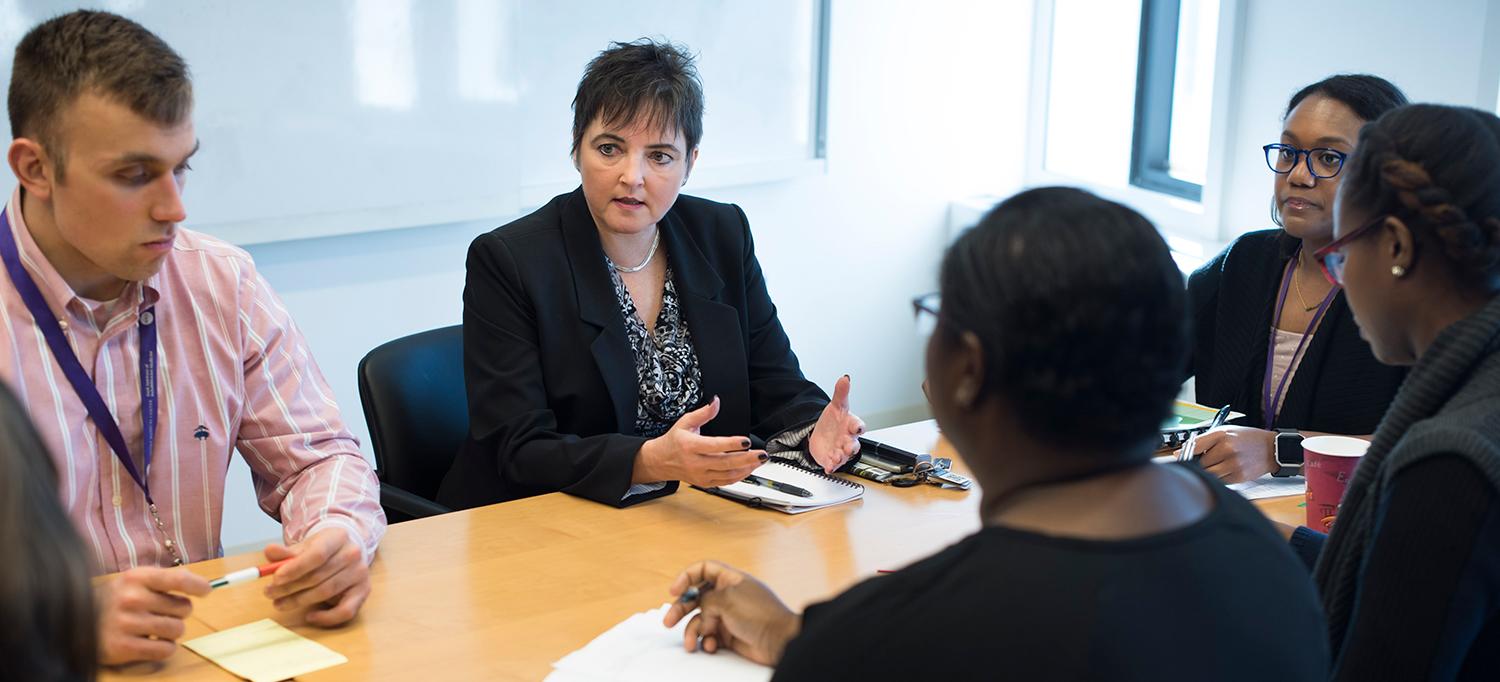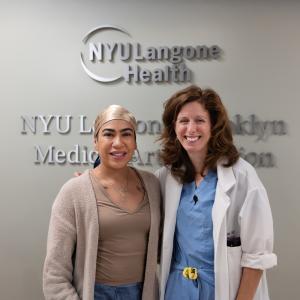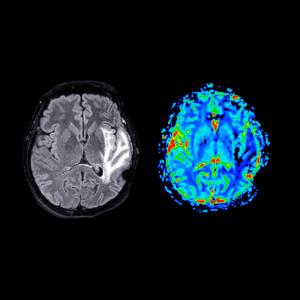
Dr. Tamara Bushnik meets with other experts to discuss disparities in care and outcomes for racial and ethnic minorities following a traumatic brain injury.
Photo: Karsten Moran
Research suggests that racial and ethnic minorities have less access to healthcare resources after a traumatic brain injury (TBI), and often experience a longer lag time before receiving inpatient rehabilitation. These disparities remain even in patients who are more seriously injured, and even when researchers have accounted for socioeconomic status.
NYU Langone Health’s diverse patient population has allowed Tamara Bushnik, PhD, associate professor of rehabilitative medicine at Rusk Rehabilitation, to study these disparities and differential outcomes in cultural, ethnic, and racial groups.
In the past 6 years, Dr. Bushnik and her colleagues have enrolled nearly 300 patients in the Traumatic Brain Injury Model Systems (TBIMS) program. “We’re utilizing the diversity of New York to examine differences in the experience of living with a chronic traumatic brain injury,” she says.
Dr. Bushnik and her team are using a series of outpatient and community-based interviews to develop educational materials and resources tailored to patients with TBI, their caregivers and clinicians, and distinct populations that may experience different obstacles to receiving care and services.
Studying Traumatic Brain Injury’s Effect on Menopause and Emotional Processing
As part of developing its TBIMS program, Dr. Bushnik’s team is participating in two multicenter module projects that are tapping into the TBIMS national database. The first study, led by the DMS Rehabilitation Institute of Michigan in Detroit, is examining menopause in women who have had a moderate to severe TBI.
Researchers are using an online survey to ask a cohort of perimenopausal and menopausal women with TBI about their symptoms and experiences, compared with unaffected and age-matched men and women. “TBI could exacerbate or change menopause symptoms, or menopause could exacerbate TBI symptoms,” Dr. Bushnik says.
The second study, led by Indiana University, is investigating the potential contribution of TBI to alexithymia—a condition in which altered emotional processing results in an inability to recognize emotions in the self or in others.
Although alexithymia has been widely documented, few outpatient rehabilitation programs have specifically addressed the phenomenon. Dr. Bushnik’s team and the project collaborators are administering an alexithymia questionnaire to patients participating in the TBIMS program so they can diagnose its severity.
“We’re looking to see how having alexithymia may or may not impact a patient’s outcome at year one and year two after a traumatic brain injury,” she says. Negative effects could be due to a lack of community integration or an inability to work on TBI rehabilitation with family and friends.
To provide a more complete view of the injury’s consequences, the team plans to interview the patient’s primary caregiver or significant other to understand their perception of how the patient’s emotional processing has changed and how alexithymia may have impacted them as well.

